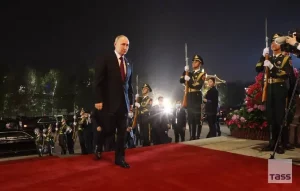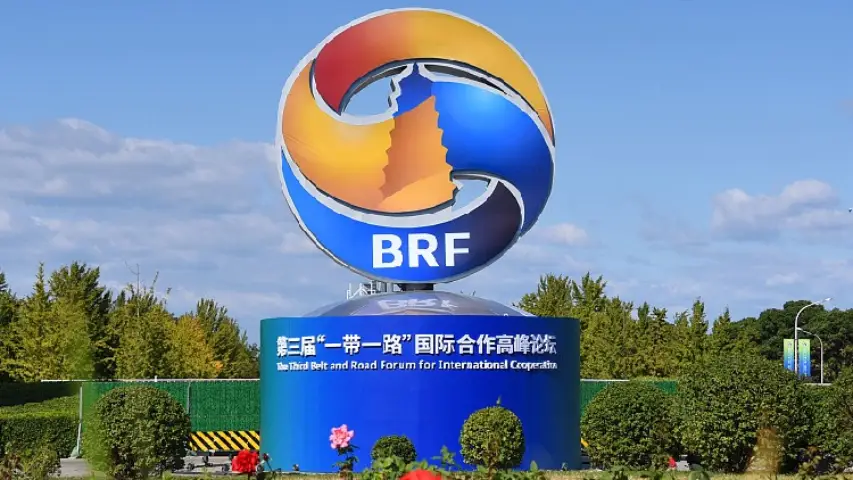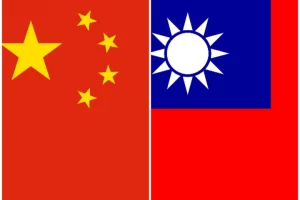In the run-up to the Third Belt and Road Forum (BRF) which took place in Beijing on 17-18 October, 2023, the Chinese Foreign Ministry was always cagey to share the names of world leaders who would be participating in the Forum. It would only say that more than 130 global leaders including heads of international organizations would be attending. After the conclusion of the BRF, it is no longer a mystery why Beijing was reticent in sharing this information.
Out of the 130 global leaders touted by China, only 22 Presidents and Prime Ministers of different countries participated in the Forum. While as an absolute number it might not appear insignificant, it pales in comparison with the participation of global leaders in the first two Forums organized by China: 30 in the First Forum in 2017, and 37 in the Second Forum in 2019. The third Forum was in some ways even more important than the first two as this was to mark the tenth anniversary of the launch by Chinese President Xi Jinping in 2013 in Kazakhstan and Indonesia. Moreover, this is seen as a flagship project of Xi in which he has invested considerable personal clout and political capital.
A detailed comparison of the participation in the 3 Forums brings out some interesting features. The most significant is the comparatively small numbers of European leaders who participated in the current Meeting. The 2017 Forum witnessed the attendance of 10 heads of state or government from European countries which represented one third of the total participation. This number grew to 11 in the 2019 BRF. This year only 3 European leaders showed up: Hungarian Prime Minister Viktor Orban, Russian President Vladimir Putin, and Serbian President Aleksandar Vucic! In the first two Forums, leaders of Belarus, Czech Republic, Greece, Italy, and Switzerland all participated at the highest level. All of them failed to appear this year.

This appears to be strongly indicative of how China’s influence has waned in Europe, possibly on account of its political, and likely material support of Russia’s aggression against Ukraine since February last year. It is also noteworthy that Putin was heralded, both by China and Russia, as the most significant presence at the Forum, probably because of Russia’s need to demonstrate that it is not isolated as a result of its Ukrainian misadventure. It is likely that by focusing exclusively on Putin’s presence at the Forum, China could have driven away some other European leaders who might have been contemplating to attend. It is significant that the EU High Rep of Foreign Policy Josep Borrell did visit China from October 12 to 14 but made it a point to not overlap his tour with the BRF.
It appears obvious that while the interest of Europe in the BRI projects has declined sharply, China has not been able to attract more leaders from the developing world to replace the shortfall from Europe. It seems clear that China is using its investments through the BRI projects, not only as a geo-economic tool but equally, if not more importantly, to buy geo-strategic influence in developing countries of the Global South. It is using its deep pockets and availability of easy finance with no uncomfortable questions asked, to challenge India’s aspirations to emerge as a Voice of the Global South.
Another striking aspect of the presence of global leaders is the sub-par participation from Southeast Asia. All 11 countries of the region – ten members of the Association of South-East Asian Nations (ASEAN) and East Timor (which is likely to become a member of the ASEAN in 2025) have signed on to BRI projects. Out of the eleven countries, seven leaders attended the first BRF; nine out of the 10 ASEAN attended the second BRF (and the 10th, Indonesia, sent its vice president). But this year, just half the ASEAN members sent heads of state or government: Cambodia, Indonesia, Laos, Thailand, and Vietnam.
Of the Southeast Asian states who didn’t send top leaders this year, Malaysia, Myanmar, and the Philippines had attended the previous two Forums. The reason for Myanmar’s absence is obvious: civil war plus a toxic reputation for the junta. The Philippines’ non-attendance seems to be obviously due to renewed tensions with China over the South China Sea; Malaysia’s non-attendance is confusing but could also be attributed to disputes in the South China Sea, particularly in the wake of issuance of a standard map by China recently in which it has shown the whole of South China Sea as a Chinese water-body territory.
What is also curious is that out of the 54 states of Africa, only five attended the BRF: Egypt’s Prime Minister, Ethiopia’s Prime Minister, Kenya’s President, Mozambique’s Prime Minister, and Republic of Congo’s President. That is the same number that attended the Forum from Africa in 2019 although both Egypt and Mozambique were represented last time by their more powerful Presidents as against Prime Ministers this time. There is a huge gap between the number of countries from Africa that have signed on to BRI projects – more than 50 of them – and those who respond positively to participate in the BRFs.
A similar inexplicable gap exists for the Middle East, where all countries except for Israel and Jordan have signed on to the BRI. Yet only the UAE has ever sent a top leader to a Belt and Road Forum (once, in 2019). The UAE downgraded its representation this year amid the turmoil in Israel to its Supreme Council member Saud Bin Saqr Al Qasimi.
And no country from Central America and the Caribbean region has ever sent a head of state or government to a Belt and Road Forum, even though 13 states from the region are part of the initiative. From South America, only Argentina and Chile participated at the level of Presidents.
From Central Asia, two presidents – of Kazakhstan and Uzbekistan – attended as against four Presidents last time. Presidents of Tajikistan and Kyrgyzstan were missing from the line up this year. The surprising addition was of Turkmenistan which was absent last time but was represented this time by the former President Gurbanguly Berdimuhammedov, Chairman of Turkmenistan People’s Council.
The absence of such a large number of leaders from Africa, Middle East, Central America etc. in the BRF could be due to a number of reasons. Firstly, signing up to the BRI projects doesn’t really count for much in the foreign policy calculations of several countries, particularly those belonging to these regions, most of which are located quite far from China. Secondly, China’s primary focus in pushing the BRI projects appears to be in its vicinity viz. Central Asia, South East Asia etc. and in some strategic partners in Africa, South America etc. Thirdly, many of the countries might not be seeing the Belt and Road Forum as a significant event unless they have some specific reason to make the effort to attend. Amid concurrent global crises in Ukraine and Israel and pressing economic issues for many countries at home, most BRI leaders appear to have chosen to convey their regret and stay at home.
Conclusion
The third Belt and Road Forum for International Cooperation drew to a close on 18th October without the “Leader’s Roundtable” and joint communique that rounded off previous Forums held in 2017 and 2019. The omission could be owing to other world leaders’ reluctance to issue a joint statement with Russian President Vladimir Putin, who is wanted by the International Criminal Court (ICC) for war crimes in Ukraine.
Putin was the guest of honor at the forum, seated front and center during Xí Jìnpíng’s opening remarks and given more than 10 minutes to speak following Xi.
Chinese media claimed that “representatives” from over 140 countries attended, but that tally included everyone from ministers to journalists. Beijing may have been able to pack the room with a record number of attendees, but the BRI family photo, consisting of top-level dignitaries, looked somewhat forlorn this year.
However, the poor showing should not reflect adversely on the BRI’s influence and popularity. The Israel-Hamas war probably impacted high-level attendance from the Gulf (although the Gulf has not deputed high level leaders to participate in the earlier BRFs in 2017 and 2019), and after attending the Asian Games in September, it may have been too soon for some leaders to make a return trip to China. In any case, the low attendance and some significant hiccups in implementation of BRI projects over the last ten years like the charges of debt trap, lack of economic viability and environmental sustainability, absence of new jobs or technology in host countries, corruption etc. have left a host of issues for the Chinese leadership to reflect upon.
Also Read: Is Xi Jinping’s likely absence at G20 summit a blessing in disguise?
(Ashok Sajjanhar is a former Ambassador of India to Kazakhstan, Sweden and Latvia. He is an Executive Council Member at the Manohar Parrikar Institute for Defence Studies and Analysis and President, Institute of Global Studies. Views expressed are personal and exclusive to India Narrative)




















